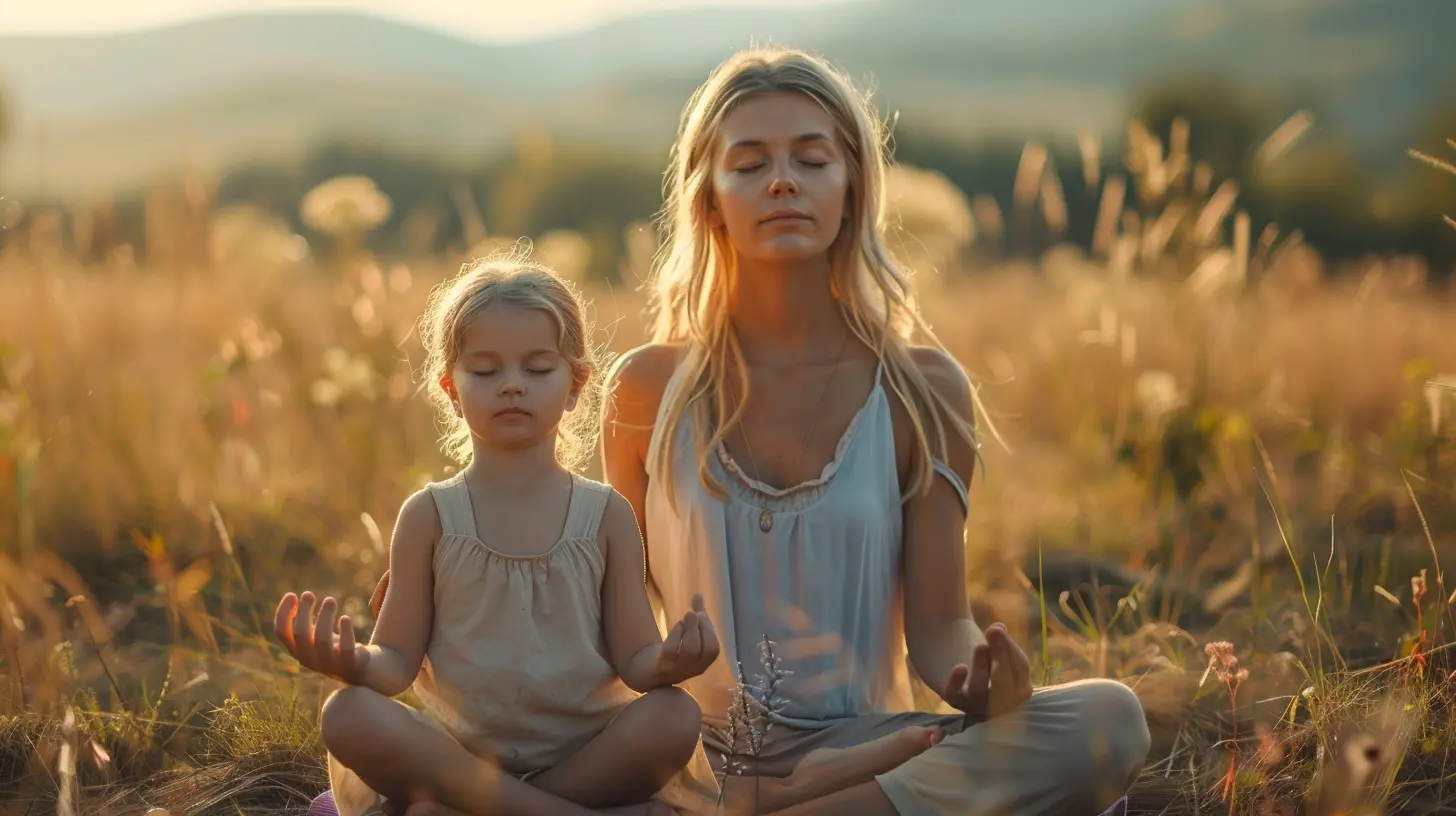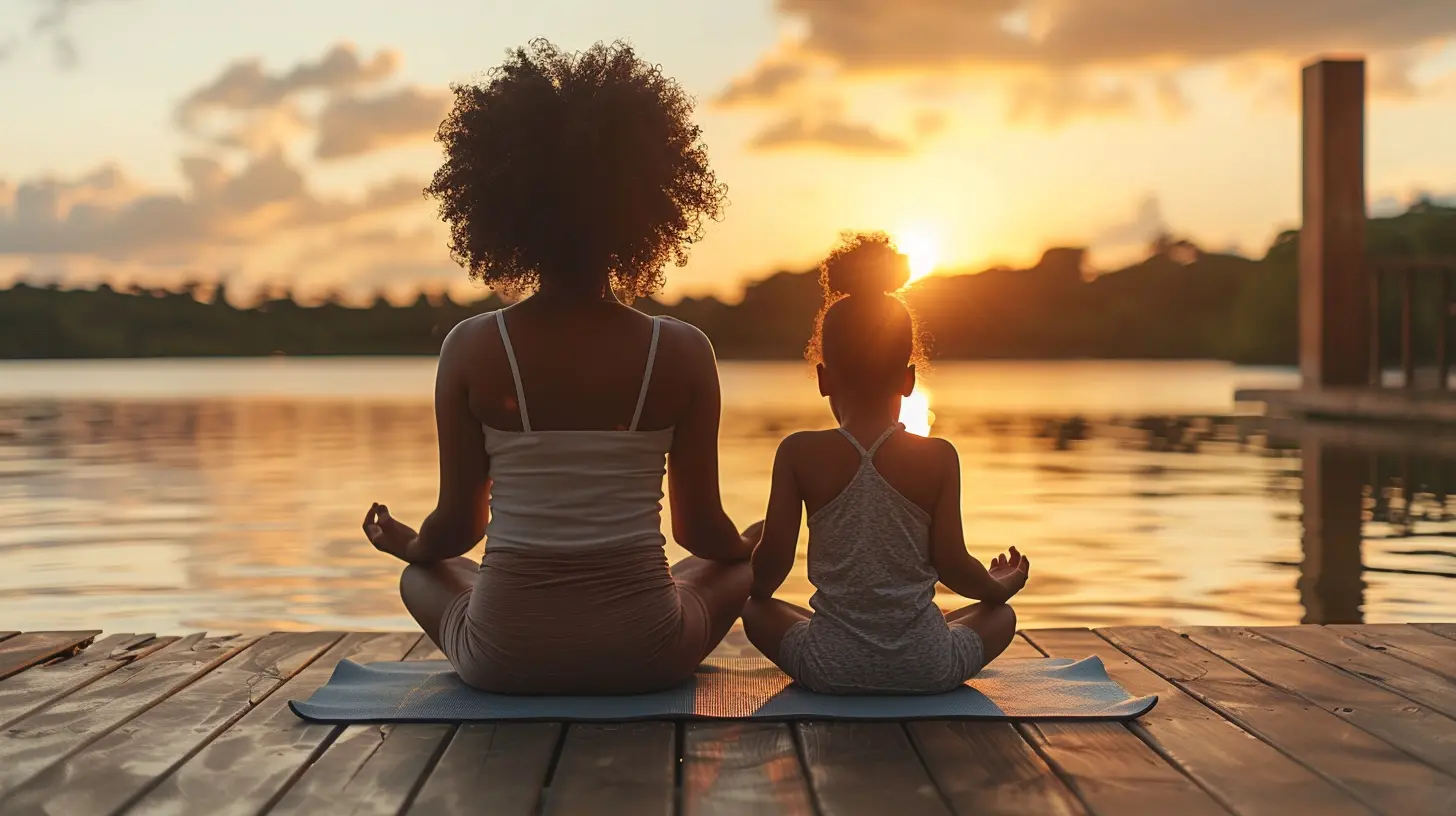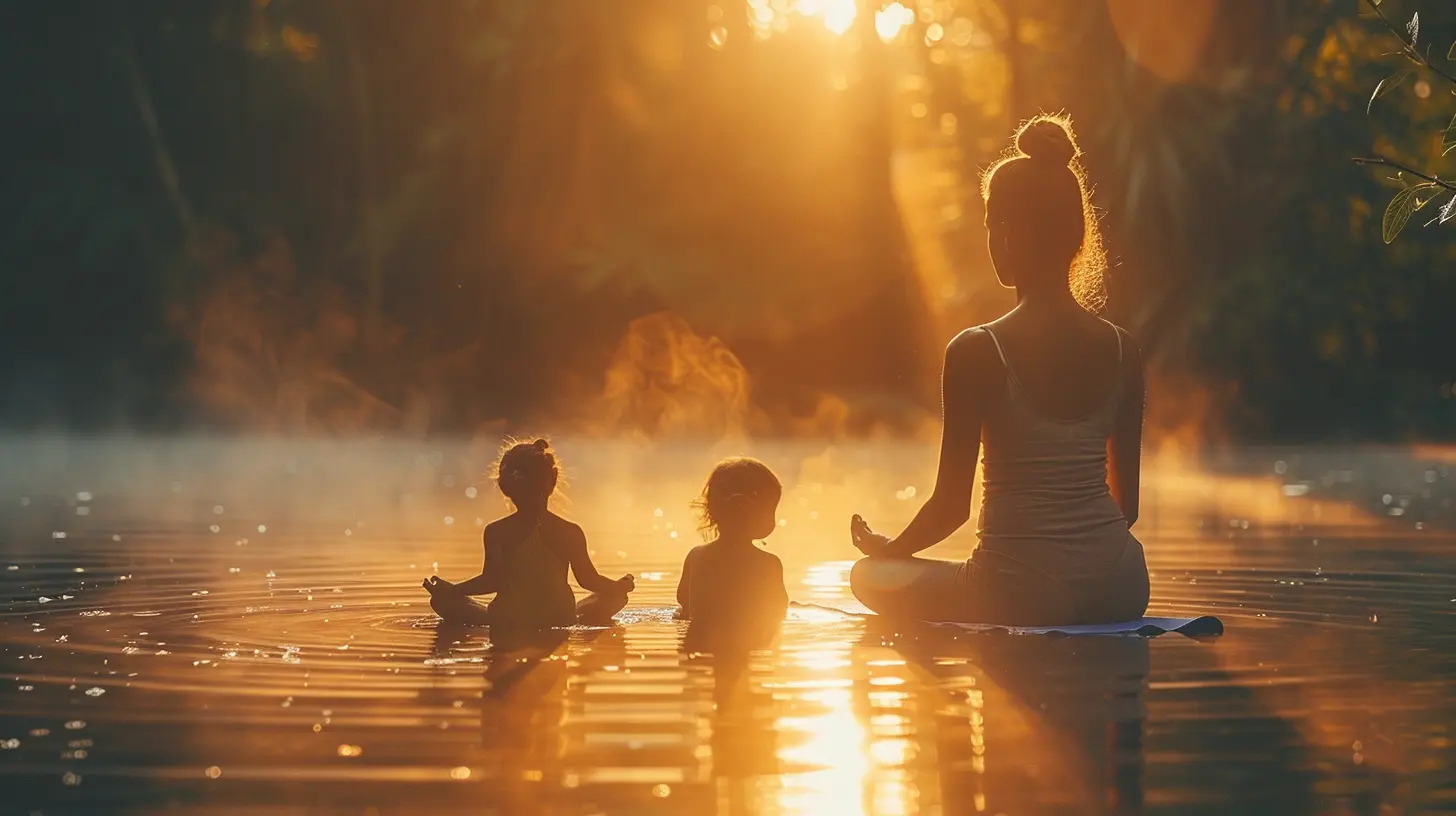Navigating the World of Parent-Child Yoga Classes
13 November 2025
Let’s be honest—parenting is a wild ride. Between diaper changes, spilled milk (literally), and the daily chaos of raising little humans, it’s easy to lose yourself in the hustle. But what if I told you there’s a magical way to bond with your child, boost both your mental health, and even strengthen those tiny, growing muscles at the same time?
Welcome to the world of Parent-Child Yoga Classes. Yep, it’s a thing—and it’s amazing. Whether you're new to yoga or a seasoned yogi, practicing side-by-side with your kid can be one of the most rewarding experiences you’ll ever share. Plus, it’s way more fun than you might think.
Let’s roll out the mat and dive into what makes parent-child yoga so powerful—and why you might want to give it a try.
What is Parent-Child Yoga, Anyway?
Parent-child yoga is exactly what it sounds like: a shared yoga practice between parents (or caregivers) and their children. It blends traditional yoga poses, breathing techniques, and mindfulness exercises with fun, interactive movements that are kid-friendly.It’s not about nailing that perfect downward dog. It’s about connection, laughter, and laying a foundation for lifelong wellness together.
Why Yoga Together? The Magic Behind the Mat
You’ve probably seen countless posts about baby yoga or kids’ yoga, but doing it together? That’s the real magic. Here’s why:1. Bonding Beyond Words
When you’re on the mat together, it’s not just exercise—it’s quality time. Yoga encourages you to be present. You’re not distracted by texts, chores, or that never-ending to-do list. Just you, your kiddo, and the breath you’re both sharing. Powerful stuff.2. Promotes Emotional Intelligence
Yoga teaches emotional regulation. For kids, learning how to breathe through frustration or hold a pose can translate into better coping skills in everyday life. And when they see you regulating your emotions with calm breathing? That’s modeling at its finest.3. Physical Benefits (for Both of You!)
Yoga helps with strength, flexibility, balance, and coordination—and that goes for you and your little one. Whether you’ve got a wiggly toddler or a tween, the physical side of yoga supports their natural growth while giving you a solid workout.4. Builds Trust and Communication
The partnered poses in parent-child yoga require teamwork. This builds trust in a safe, nurturing way. Kids also learn how to follow instructions and express their needs clearly. It’s like a silent language spoken through movement.
What to Expect in a Parent-Child Yoga Class
So you’re thinking of trying a class? Awesome. Don’t worry—you won’t be meditating in silence for an hour while your toddler runs wild (unless that’s how your kid rolls!).Here’s a peek at what typically goes down in a parent-child yoga class:
Warm-Up Fun
Think clapping games, songs, and movement-based activities to get the energy flowing. It’s all about getting those little bodies ready to move—and sneakily teaching them to focus.Playful Poses
You’ll move through kid-adapted yoga poses like “Tree,” “Down Dog,” and “Happy Baby.” You know, poses with names that sound exciting to kids. These are often turned into imaginative stories or games to hold their attention.Partner Activities
From simple stretches to balance-based poses, you’ll partner up with your child to create trust and connection. These moments are golden. Bonus: they make for some pretty adorable photo ops.Mindfulness + Breathing
These are kept super simple for kids. Maybe you’ll do “belly breathing” with a stuffed animal resting on their stomach, or a short guided visualization like imagining floating on a cloud. Mindfulness becomes a game—and a habit.Cool Down & Closing Circle
Every class usually ends with a calming wind-down. This might include gentle stretching, a story, or a mini-meditation. It gives kids a chance to reflect and bring it full circle.
Yoga for Every Age and Stage
Let’s break it down a bit more—because the way you experience yoga with your toddler will be quite different than with your grade-schooler.Baby + Parent Yoga (0–18 months)
Yes, you can do yoga with a baby! In these classes, you'll do gentle stretches while holding or interacting with your baby. Think of moves that support postpartum healing and offer stimulation for baby’s sensory development. Expect lots of giggles and maybe some diaper changes mid-class.Toddler Yoga (1–4 years)
Toddlers are movers and shakers. Classes at this stage are high energy and filled with songs, animal poses, and interactive movement. Lots of silliness, lots of joy—and it’s all part of the yoga experience.Preschool + Early Elementary (4–7 years)
At this age, kids start understanding pose names and sequences. You can do more structured flows, introduce simple breathing exercises, and even chat about emotions. It’s yoga meets life skills.Older Kids + Tweens (8–12 years)
Now we’re talking deeper stretches, stronger poses, and more mindfulness. This age is ideal for learning about the mind-body connection. Classes might include journaling, partner flows, or light meditation. Bonus: it’s a great outlet for school stress.Tips for a Successful Practice (Without Losing Your Mind)
Let’s be real—not every yoga session will be Insta-worthy. Your child might crawl under you during downward dog, start crying halfway through, or run off mid-class to chase a butterfly. Totally normal.Here are a few tips to help keep your sanity (and your Zen):
1. Go With the Flow
Let go of expectations. The goal isn’t to “do it right”—it’s to do it together. Whether your kid holds a pose for five seconds or is rolling on the mat laughing, you’re still winning.2. Bring Props or Toys
Soft toys, scarves, or yoga cards can make the session more interactive. Some parents even let their kids bring a “yoga buddy” to class. Whatever keeps them engaged, go for it!3. Keep It Short and Sweet (At Home)
If you’re practicing at home, don’t push for an hour-long practice. Sometimes 10–15 minutes is more than enough. Keep it fun, keep it light, and end on a high note.4. Praise Effort, Not Perfection
Yoga teaches patience and persistence. Celebrate your child’s willingness to try rather than how well they perform a pose. That “you’re doing great!” can mean the world to a little yogi.Benefits That Go Beyond the Mat
Let’s zoom out for a second. Parent-child yoga isn’t just about stretching and breathing. It’s a lifestyle shift.You're teaching your child to:
- Slow down in a fast-paced world
- Notice their emotions without being overwhelmed
- Find calm when life gets stormy
- Move their body in joyful ways
- Connect with you in ways that words can’t capture
That’s not just yoga. That’s parenting gold.
Is It Worth It? (Spoiler Alert: Yep!)
If you’re still on the fence, ask yourself this: What other activity gives you exercise, mental clarity, emotional bonding, and laughter in one go?Yoga is the ultimate multitasking mom win. And you don’t need matching leggings or a picture-perfect setup. All you need is a mat, a little space, and an open heart.
Finding the Right Class for You
Ready to give it a go? Here’s what to look for when choosing a parent-child yoga class:- ✅ Instructors experienced in both yoga and child development
- ✅ Age-appropriate structure and content
- ✅ Classes that emphasize play, connection, and inclusivity
- ✅ A welcoming, no-pressure atmosphere
Many studios even offer trial classes or online sessions, so you can test the waters before committing.
Final Thoughts: Breathe In, Bond Out
In a world full of screens, distractions, and over-scheduling, parent-child yoga offers a breath of fresh air—literally and figuratively. It’s not just about fitness. It’s about connection. About pressing pause on the noise to tune in to your child—and yourself.So next time you need a break from the chaos (or just want to move and laugh with your little one), unroll that mat and try a little yoga.
Your mind, body, and child will thank you.
all images in this post were generated using AI tools
Category:
Parenting ResourcesAuthor:

Kelly Snow

